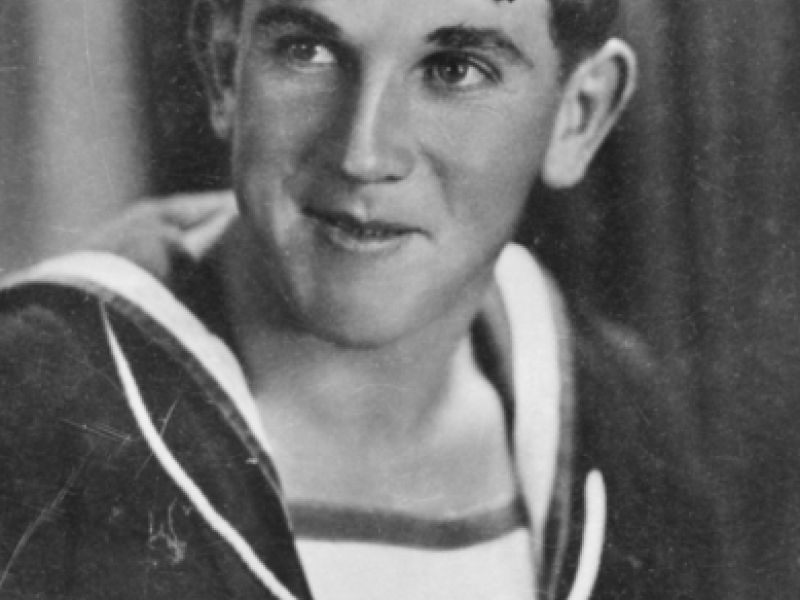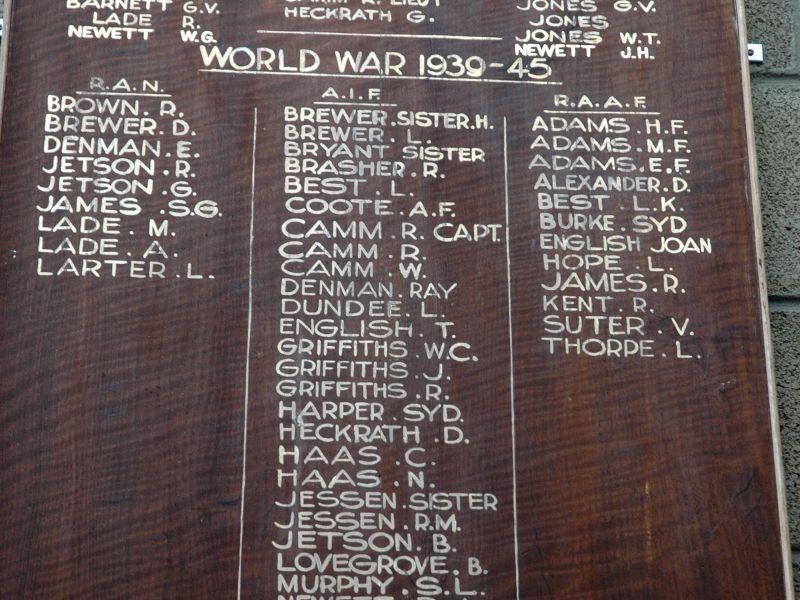Able Seaman Alan Walter Lade, HMAS Australia II
Alan Lade was born on 5 October 1924 in Scottsdale, in north-east Tasmania, to Francis and Sylvia Lade. Francis Lade was a farmer and part-time trooper in the 22nd Light Horse Regiment. Following the outbreak of the war in the Pacific in May 1942, Francis was called up for the Militia.
Five months later, a week after his 18th birthday, Alan Lade enlisted in the Royal Australian Navy.
In early November 1942, Lade trained as an ordinary seaman on HMAS Cerberus on Western Port Bay, south of Melbourne. In February 1943, he was posted to the patrol craft HMAS Yandra, conducting anti-submarine patrols and escort duties along Australia’s eastern coast and north to New Guinea.
In August 1943, Lade was posted to the sloop HMAS Warrego (II), which was then undergoing a refit. On 14 October, he was rated acting able seaman as the sloop resumed escort duties between Australia and New Guinea.
In March 1944, Lade was posted to the RAN’s anti-submarine school, HMAS Rushcutter, in Sydney, to attend a radar course. He failed the course and in early June, was posted to the heavy cruiser HMAS Australia (II).
The Australia, along with the heavy cruiser HMAS Shropshire, several destroyers and other vessels, formed the Australian squadron that was operating closely with the United States Navy as the joint Australian–American Task Force 74. The task force had earlier supported the American amphibious push through the Netherlands East Indies.
By mid-1944, the Allies were preparing to return to the Philippines. On 20 October, American forces landed on the island of Leyte in the Philippines. The next major phase in the campaign was the invasion of Luzon in Lingayen Gulf which began on 9 January 1945.
The Japanese fiercely opposed every phase of MacArthur’s offensive at sea, in the air, and on land. During the battle of Leyte Gulf, Australia was hit by a Japanese suicide aircraft on 21 October 1944, which killed 30 officers and ratings. In January 1945, during the battle of Lingayen Gulf, Australia was again in the thick of the action. The heavy cruiser was hit five times over five days, and another 44 men killed.
On 6 January, Able Seaman Lade was acting as a “scratch” gun crew for a 4-inch gun, replacing men who had been killed or wounded in an attack a day earlier. His gun was in action when at about 5:45pm, a Japanese Val dive-bomber crashed between the 4-inch gun-mounts on the starboard side and exploded in a fireball.
Fourteen men were killed, including Able Seaman Lade. He was 20 years old.
Writing to Sylvia Lade after her son’s death, Captain John Armstrong, Australia’s captain, tried to offer some solace,
“How young he must seem to have taken on a man’s responsibilities. He gave his life for his country and the freedom of the world and no man can do more.”
Karl James, Historian, Military History Section
- Australian War Memorial https://www.awm.gov.au/collection/C2278435

 Australian War Memorial
Australian War Memorial